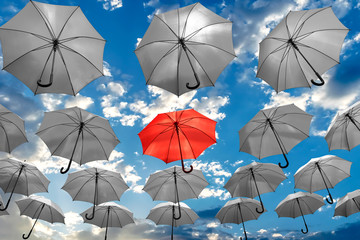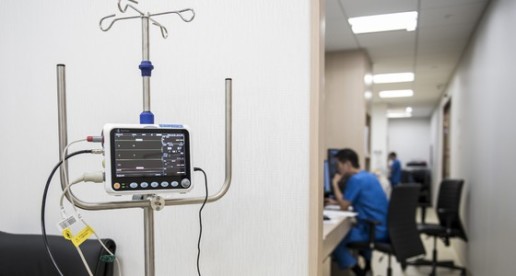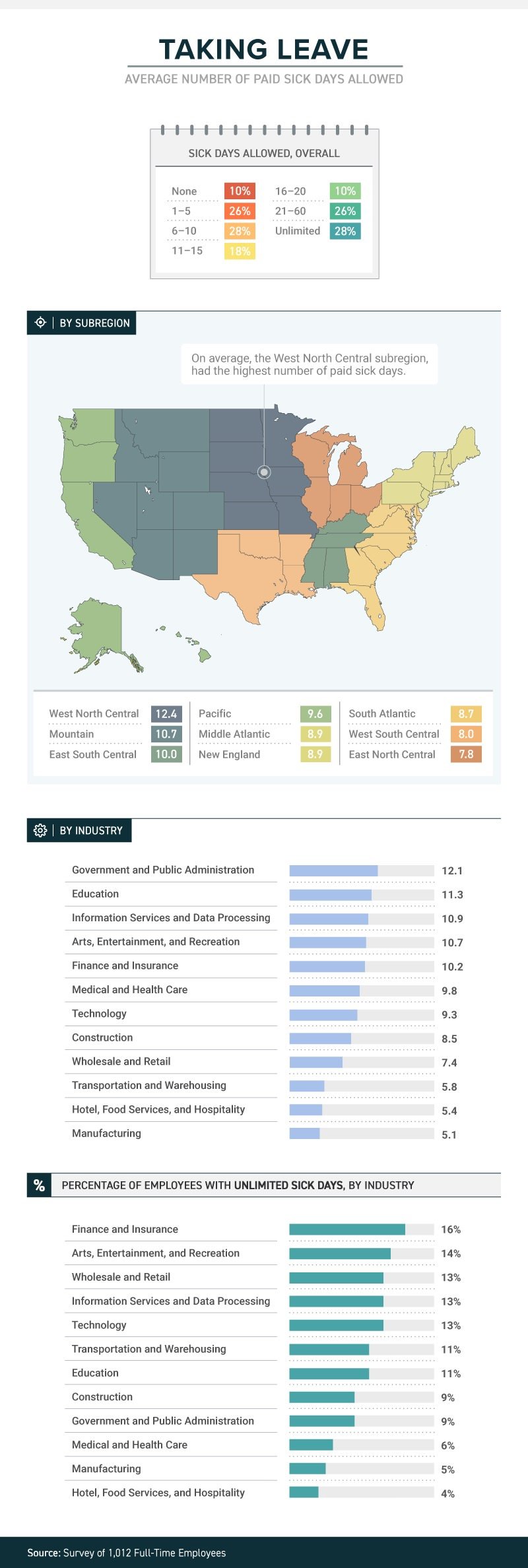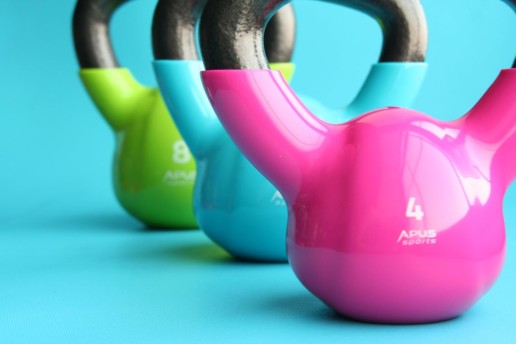Creating Better Employee Benefits With Advanced Analytics
It is important to provide a workplace, employee benefits and payment system that keep your employees happy. Read this blog post to learn how you can create better employee benefits with advanced analytics.
Job satisfaction is the most important part of maintaining a happy workforce. If you have a workforce that feels like they could get a better deal elsewhere then they are likely to leave.
It is therefore important to provide a working environment, benefits and payment system, that keeps your employees happy without breaking the bank.
Analytics are being used to make sure that this is being done effectively, seeing where discontent is occurring and helping to suggest how this can be solved.
For instance, there are research companies that can use text analysis tools to analyze hundreds, if not thousands of survey entries that can give a holistic view of employee benefits. Often when survey results are being analyzed by an individual, it is difficult to gauge the overall feeling and there can be bias put on the results.
It also allows for HR to note the frequency of meetings with individuals as well as the frequency and size of any pay rises. If it is flagged that somebody hasn’t had a meeting with HR where they can directly communicate any concerns for a considerable amount of time, then tho scan be rectified.
Analytics can also be used to investigate which teams are happiest, have the highest retention rates or are the most profitable. This then allows companies to investigate in detail what is making these teams happiest or most productive, then create benefit packages to create similar results for other teams in the company.
Analytics and data have allowed companies to collect data to make their workforces happier and more content. This, in turn, creates situations where employees are eager to work and appreciative of the benefits they receive, improving ROI and increasing productivity.
SOURCE: Pannaman, E. (12 October 2018) "Creating Better Employee Benefits With Advanced Analytics" (Web Blog Post). Retrieved from https://channels.theinnovationenterprise.com/articles/202-creating-better-employee-benefits-with-advanced-analytics
What's a simple addition to your day to decrease stress & improve well-being?
Gratitude is more a state of mind rather than a personality trait, varying over the course of time. A recent study shows that gratitude reduces stress and fosters well-being. Continue reading to learn more.
Previous research on the positive effects of gratitude has shown that gratitude appears to reduce stress and foster well-being (e.g. Wood et al., 2010). A recent prospective study in which people were instructed to list things they were grateful for on a daily basis supports this notion (Krejtz et al., 2016). However, little if any, research has looked at whether spontaneous (non-directed) changes in gratitude track with well-being and stress response. Rather than being a stable personality characteristic (a “trait”), gratitude may be more of a “state,” varying over the course of time—or perhaps a combination of both. Do daily fluctuations in gratitude correlate with well-being and indicators of happiness, stress, and depression? Furthermore, does gratitude serve as a buffer for stress and negativity, helping to offset toxic effects on more challenging days?
In order to look more closely at how natural day-to-day levels of gratitude may interact with various indicators of well-being and stress, researchers Nezlek, Krejtz, Rusanowska and Holas (2018) followed 131 participants for two weeks, using daily self-assessments to investigate correlations among gratitude and factors related to well-being and stress. Daily measures included gratitude, positive and negative emotional states, self-esteem, depressogenic adjustment (optimism about oneself and life), worry, and rating of important events of the day on how stressful and how positive they were. Participants reported on 10 possible categories for events: family, interpersonal, partner, work, finances, official, health, hobby, values, and other/everyday events.
As in previous studies looking at intentionally cultivated gratitude, researchers found that on every measure, gratitude was significantly correlated with well-being. On days when people felt more grateful, well-being was reported as being higher. Likewise, on higher stress days, participants reported lower well-being, and on lower stress days, participants reported greater well-being.
Using gratitude to buffer stress responses.
Importantly, they found that gratitude did in fact appear to act as a buffer for stress. On days with fewer positive events, gratitude and well-being were more strongly related, suggesting that gratitude may serve to bolster resilience, amplifying lower positive emotions on difficult days or perhaps even providing, essentially, internal positive events to compensate for a lack of external positive events. This is especially noteworthy because people often have difficulty tapping into gratitude when difficulties arise, focusing on negatives with bitterness or pessimism.
Gratitude therefore appears to provision us internally with a positive response when external events fail to do so. For people who are able to muster up gratitude when the going gets rough, not only as a generally characteristic but also as a just-in-time response to stress and negative events, gratitude can be a “bridge over troubled water” that helps to keep us from getting pulled down into a negative spiral of maladaptive coping. People who use gratitude in this way must be able to do so, rather than undermining resilient responses.
Gratitude, compassion and resilience.
In keeping with research showing that resilience is related to cognitive flexibility, active coping, optimism, and related beliefs, the current research suggests that a subset of people use gratitude automatically, generating a state of mind which buffers negative events and stressful responses to sustain greater overall well-being. Religious belief, which often emphasizes gratitude, is also associated with greater levels of resilience. In addition, recent research by Abbondandolo and Sigal (2018) also found a positive relationship between self-compassion and active coping, suggesting that there are common pathways governing gratitude, self-compassion, and resilience.
Additional research is required to further understand the causal relationships between gratitude, resilience, well-being, and related factors in order to spell out what innate factors help make us stronger, as well as what interventions can bolster overall well-being. Understanding whether those who naturally utilize gratitude to buffer stress and sustain well-being tend to do this consciously or not, how they had learned to do so during the course of development, and whether there are intrinsic factors that predispose one to feel grateful would help us learn how to teach the effective use of gratitude—especially for those who have difficulty seeing for what, if anything, there is to be grateful.
SOURCE: Smith, K. (26 March 2018) "What's a simple addition to your day to decrease stress & improve well-being?" (Web Blog Post). Retrieved from: https://www.provanthealth.com/industry-trends/2018/3/26/whats-a-simple-addition-to-your-day-to-decrease-stress-improve-well-being
Original source: Psychology Today | Grant Hilary Brenner M.D. | How Does Spontaneous Gratitude Increase Daily Well-Being?
DISCOVER THE WELLNESS TRENDS FOR 2019
Did you know: A clear space equals a clear mind. Minimalism is one of the new wellness trends for the New Year. Read this blog post for more 2019 wellness trends.
It’s that time of year again when we cast our minds forward and bring you our predictions for the wellness trends that are set to relax, improve and make us feel better about ourselves in 2019. And let’s be honest it feels as if there’s a new trend every week at the moment, so we’ve sifted through the trend trough to tell you ALL about the ones you absolutely need to know about!
Reconnecting With Nature
As a predecessor to the digital detox trend of last year (although heaven knows we still haven’t mastered that one yet!) 2019 is all about shifting our backsides off of the sofa and actually *gasp* leaving our homes to reconnect with nature. The focus is very much on disconnecting i.e. leaving your phones and even your fitness trackers (sorry you’ll have to manage without the steps for this one) in order to reconnect. You see exercising outside is all well and good, but it starts to become detrimental when we begin putting too much pressure on ourselves to hit the next PB or when we become obsessed with comparing ourselves against our friends on the Fitbit leaderboard.
Hey, I’m all for healthy competition and that heady endorphin rush when you smash out an all-time best, but to truly enjoy the benefits of what nature can do for our health we need to unplug and pay attention to what is out there – without the distractions!
From moonlit yoga on the beach to forest bathing in the sensual shadiness of the beautiful English woodland, learning to embrace your inner mother nature is all about fine-tuning the senses. It’s essentially another branch of mindfulness that allows us to break free from the stressful trappings of the modern world and find inner peace and gratitude for the world around us.
Soothing Sounds
You must have that one song that makes you feel amazing? That song that no matter how down in the dumps you are, when you hear those first notes you’re up dancing and feeling as if nothing can stop you. Music’s funny like that isn’t it? It evokes all kinds of emotions in us – from positive uplifting vibes, sorrow and sadness, motivation and drive, right through to silliness and freedom of expression – music has a power over us like no other.
And the sound, of any description, is no different. Think about when you visit a spa, often there will be sounds of the rainforest, birds chattering in trees or that peaceful drift you off to sleep music, floating over the space, creating a calm and serene ambiance and helping you to relax and switch off.
Sound therapy works through the healing power of sound vibration and frequencies. All of us have our own natural frequencies and when we are exposed to the external frequencies of singing bowls, gongs, tuning forks, drums etc. and allow them to wash over us and resonate with us, natural healing of both the body and mind can begin to occur. For example, Tibetan singing bowls can help people to experience a deep sense of relaxation, which can relieve pain, help lower blood pressure, reduce stress, improve circulation and blood flow, balance the Chakras, create focus and emotional clarity and leave people feeling at peace and happy with themselves.
Everyone has the ability to connect with the healing power of sound and most important of all it gives us that chance to focus on just one of our senses, which in a world where our senses are continually blasted with information overload, this is one of life’s most simple of luxuries. Sound classes are becoming increasingly popular for this very reason and many also incorporate the practices of yoga and meditation within them to further aid the wellness experience.
Color Therapy
Do you have a favorite color? There’s a good reason why you are drawn to one color over another and it’s all to do with energy and the way it makes you feel.
Color is energy that is transmitted on different wavelengths and frequencies to create different colored light. There are seven shades of visible light, the rainbow colors, then there is white which contains all of the 7 shades, black which absorbs light and therefore appears void of color, and then there are literally millions of invisible colors that our eyes cannot see. Color therapy, or Chromotherapy to give it its official name, is all about using color to enhance our health and wellness in certain ways. Each color has its own vibrational frequency that relates to different physical symptoms and emotions.
BLUE – This is a calming color that is used to ease symptoms of pain, anxiety, depression and can even aid sleep. Yes I know we’re told the blue light emitted from our screens is bad for us, but that’s a synthetic digital light, so I’m afraid scrolling through Instagram in bed won’t have the same effect! Research has also shown that blue light can help lessen inflammation, lower fevers, reduce high blood pressure and relieve migraines, due to it’s cooling almost anesthetic style energy.
RED – The fiery, powerful color that denotes passion and confidence. It’s bold and powerful and will give you balls when you need it most. And as such, it is thought that being exposed to red light will increase your pulse, raise your blood pressure and increase your breathing rate. Doesn’t necessarily sound too good, right? But red is the color to energize, to motivate and to put yourself out there and show people you mean business. Infrared therapy is also used to activate collagen cells, stimulate the skin to help reduce the appearance of fine lines and wrinkles and can speed up the healing process.
YELLOW – This bright cheerful color does as you would expect; it uplifts, invokes optimism and a real sense of self love in a person.
GREEN – The color of nature, green is associated with harmony and it provides a neutral, positive and calming effect.
ORANGE – This color can raise energy levels and help improve mood, I mean who can’t but raise a smile when you see something bright orange!?!
PURPLE – The mean and moody one, the color of royalty, richness and luxury. Purple is the color for tranquility and works well in a detox sense, stripping the body and mind of impurities and can help patients deal with that sense of mind over matter when dealing with chronic pain.
And then there’s Colorstrology – a bit like astrology, but this is the idea that each birth month has its own color, which is a reflection of your personality. To find out yours go to the Pantone website and pop in your birth date.
2019 sure is set to be a colorful one that’s for sure!
Sleep Hygiene
We all need sleep to survive, it’s a chance for our body and mind to rest, recharge, repair and grow. However, there aren’t many of us that are a) getting enough sleep and b) getting good quality sleep. 2018 saw the rise in good sleeping practices, with power naps and sleep yoga hitting the wellness scene. But 2019 is set to move on from this by teaching us the ways in which we can employ these good habits at home. And it’s much more about quality rather than quantity. Because yes we should be aiming for around about 7 hours of shut-eye a night, but surely 4 hours of quality sleep is way more beneficial than 8 hours of disrupted sleep?
Sleep hygiene is about being ‘clean’ with your sleep, which means setting good practices and routines such as the following:
- Avoiding caffeine late at night.
- Switching off screens and other devices at least an hour before going to bed – and ideally, you don’t even want them in your bedroom.
- Get the temperature just right- not too hot and not too cold.
- Ensure the room is dark – blackout blinds are your new best friend.
- Keep noise to a minimum, or if that’s impossible due to noisy neighbors or yapping dogs then try listening to white noise which will drown out the other sounds and has a calming, sleep-inducing effect.
- Comfort is key to ensure you have a good mattress, a duvet tog that you’re happy with and good supportive pillows.
You may well think that you can catch up on any missed sleep during the week at the weekend, but irregular sleep is far more damaging. Instead aim to finish work by a set time and give yourself a deadline to be in bed, even if you’re up there and reading for half an hour beforehand, that will help you relax and unwind from the day.
And if you’re someone who struggles to switch off and get to sleep try having a warm bath, drinking a hot milky drink, meditating, or practicing some deep breathing exercises before settling down for the night. These are all things that help induce sleepiness and should see you dozing off in no time.
Ultimately if you eat well, exercise regularly and keep those stress levels down then your sleep hygiene should be pretty damn clean. If you don’t… then perhaps that’s something you could work on in 2019!
Less Is More
Minimalism, the KonMari method, decluttering… call it what you like, but essentially all you need to know is that a clear space equals a clear mind.
Go on, try it.
Choose just one cupboard in one room of your house, drag everything out and then set to work sorting out what you do and don’t need. It’ll be tough, especially when you start finding long lost treasures or useful kitchen gadgets you’d forgotten about, or that top you wore back in 1992 that made you look like a bohemian princess, but you need to set yourself limits. Marie Kondo, the queen of clutter-free living, theorizes that we should only hang onto possessions that ‘spark joy’, those that don’t only serve to hold us back and bring negativity into our lives. And it’s certainly a good place to start. Can you honestly say that vegetable peeler shaped like a pencil sharpener brings you joy? Or does it annoy you because every time you go to open the drawer it catches and makes the drawer jam? And that book you’ve clung onto from your days at uni, the one riddled with post-it notes and pencil scrawled study notes… does it bring you joy? You can’t ever read it properly again, it’s probably out of date and so therefore no longer suitable as a study guide for anyone else and all it’s really doing is taking up space and gathering dust on your bookshelf.
The thought of getting rid of your belongings is a scary one. Objects become security blankets, but they are restrictive and oppressive and are preventing you from living your best life. Existing in a tidy and clear space, whether it’s within the work or home environment, can help reduce stress levels, conserve mental energy, give us clarity, make us more productive and most importantly of all can make us feel in control. And when you’re in control you can achieve anything!
Clean Air
As much as we’re all for clean air outside, is it actually doing us any good if our home or work environment is riddled with all kinds of chemicals – yes I’m deffo thinking of those plug-in air fresheners!!
Whether you fill your rooms with plants (they’re amazing at purifying the air and look pretty spesh too!), pay more attention to the ingredients used in your cleaning sprays etc. or even download an app that can tell you how pure the air is – yes really! – 2019 is 100% about living clean. We’ve done the clean eating thing, started to adopt the clean sleeping thing, so it was only a question of time before clean breathing became a thing.
Sales of air purifying plants have more or less tripled over the past year as people strive for that natural air in their homes. If you listened to your Biology teacher at school, you’ll know that plants are capable of turning carbon dioxide into vital oxygen, but they are also great at absorbing unwanted nasties such as formaldehyde, benzene, ammonia, acetone etc. which are found in so many of the items we have in our homes and workspaces.
Crystal Clear Water
Crystals were everywhere in 2018, helping us with their energizing vibes and well they just look so pretty don’t they!?! And don’t worry, they’re not going anywhere, they’re just infiltrating other areas of our lives, namely… our water bottles. Yep, that’s right, you’ve seen the fruit, veg and herb infuser water bottles, now it’s time for the crystal infused ones!
Not only does it take a good Instagram picture (these are beautiful things peeps!) but the crystal gets to work its magic by pouring out all of its positive energy into the water you’ll be sipping on. Crystal gurus have been doing this for donkey’s years, but for us newbies, crystal-infused water is big news. It’s basically creating an essence and so it is up to you which crystal to insert in your water bottle for any given day.
One thing you must, must, MUST make sure of is that any crystal you use is safe to be put in water. Certain stones may dissolve, whilst others may contain lead or corrosive chemicals. A quick Google search is all that should be needed to confirm whether a crystal is safe in water or not and it’s worth keeping a list of the ones you can and cannot use and storing them in different places so you don’t get confused.
It certainly takes drinking crystal clear water to a whole different level, doesn’t it!?!
SOURCE: Stafferton, B. (11 July 2018) "DISCOVER THE WELLNESS TRENDS FOR 2019" (Web Blog Post). Retrieved from https://artofhealthyliving.com/discover-wellness-trends-2019/
Give employees time back in an always-on working world
Occasionally, work extends beyond the traditional workday, no matter how efficient your employees are. With time being the most precious benefit of all, a growing number of employers are offering benefits designed to save employees time. Read on to learn more.
When it comes to employee benefits, what do people really want?
As HR and benefits professionals, we shouldn’t make broad assumptions or generalizations about what benefits our employees need or want. Each employee in any given organization is an individual with different circumstances to be met at every stage in their lives — from those entering the workforce to those preparing to retire, and everyone in between. This is why employers must differentiate their benefits packages to meet the needs of a diverse and multigenerational workforce. And as consumers demand more choice in how they spend their benefits dollars, employers are getting more creative and curating a more expansive set of options for everyone.
No matter how efficient an employee is, work inevitably extends beyond the traditional workday from time to time. Similarly, as the lines between home and work blur with flexible work arrangements and email available 24/7 on smartphones, employees still need to take care of personal tasks, like scheduling family dentist appointments, setting up child care, disputing medical bills or calling the veterinarian … all during the workday.
Regardless of generation, industry, position or title, people are yearning to find the right balance between work and life demand. Time is the most precious benefit of them all. As a result, there are a growing number of employers offering benefits designed to save employees time.
Previously offered predominantly by large, tech companies in Silicon Valley, we’re seeing time-saving benefits spread to employers and industries of all kinds and encompass a variety of conveniences, from on-site dry cleaning pickup, to employer-funded shuttles to get employees to and from work, gym memberships, grocery delivery and services like dog walking and personal errands. This benefits category can also include more significant, personalized benefits like concierge health services, assistance in evaluating elderly care options, telehealth for humans and pets, and emergency childcare services.
Once seen as just perks, these services run deeper. Employers care about their people, and these time-saving benefits — anything people leave work early for, or deal with during the work day — has created a new benefits category that increases employees’ productivity and capacity for work by eliminating distractions and freeing up mental space. While these types of benefits may seem like “nice to have” instead of essentials, they can add up and make a substantial difference in employees’ lives.
Life is complicated. Things go wrong that impact productivity, contribute to presenteeism and the well-being of our workforce; these employee benefits offered through employers are returning valuable time back into someone’s day, helping them focus on work and better balance work and life expectations.
Employees need HR’s help. By not offering a wide variety of benefits personalized to the workforce, employers are missing out on an opportunity to provide great value to employees and make a tremendously positive change in their lives. But many HR professionals falsely assume employees will ask for voluntary benefits directly and proactively make suggestions about what would help them. You may say, “My employees aren’t coming to me asking for things like elder care services, so they don’t need them.” My response is, of course, they’re not asking: they may not want you to know about challenges they’re facing in their personal lives.
Employee’s personal situations are just that - deeply personal. They may be suffering in silence. Americans are now facing the highest housing, education and medical costs in our history, meaning nearly everyone is stressed out about family, work and finances; it’s causing problems in the workplace. If their minds are somewhere else and not focused on work, their productivity could be suffering.
Open Enrollment is rapidly approaching. Don’t wait for your employees to ask you for benefits. Take advantage of OE to ask your employees what they’re looking for, as this is the time they’ll already be assessing what types of benefits they need in the coming year anyway. Use this time to survey the workforce to see what people do or don’t like about their benefits. Be sure to specifically ask “What can we offer you?”
It’s a question, and a gesture, that may matter more to employees than you know.
This article originally appeared in Employee Benefit Adviser.
SOURCE: Oldham, J. (14 September 2018) "Give employees time back in an always-on working world" (Web Blog Post). Retrieved from https://www.benefitnews.com/opinion/give-employees-time-back-in-an-always-on-working-world?feed=00000152-18a4-d58e-ad5a-99fc032b0000
How data science can help employers build better benefit plans
New approaches to data science are now allowing companies to have many different definitions of data and have them all coded. Read on to learn how data science can help you build a better benefits plan.
Is your data management system overdue for an overhaul? Benefit plan sponsors don’t need to feel stuck with old systems requiring hours of manual data entry, according to Marc Rind, chief data scientist for ADP.
“I’ve been in data for a long time,” he says. “For generations, the traditional data management approach has been people having to standardize data.”
But people in different companies — even different departments of the same company – could have different definitions and means of data. An organization’s governance team would have to come up with one definition for everyone to adhere to.
With new approaches to data science, Rind says, “you’re able to have many different definitions of your data and have them all coded. It’s not about governing the definition of data but more about enhancing and publishing that data.”
With data science, employers and those in HR can see trends much more easily using automated mapping and search capabilities. This will allow them to see trends over time, like what people are choosing for their benefit plans and how benefits impact employee productivity and engagement.
“It builds context around the data,” Rind says. “For employers, they have to not only understand which benefit offerings they have to offer to employees but the effect on retention. They can also see what similar employers are offering and if they are getting higher retention rates.”
Employees can use the data to see what benefits others with similar backgrounds have chosen to get, helping them decide what their perfect healthcare plan looks like. However, they cannot yet see how satisfied people similar to them were with these benefits. Rind says that this feedback loop is important, and will become more prominent for the next generation of data science systems.
SOURCE: Spiezio, C. (16 June 2016) "How data science can help employers build better benefit plans" (Web Blog Post). Retrieved from https://www.benefitnews.com/news/how-data-science-can-help-employers-build-better-benefit-plans
9 Simple Ways to Deal With Stress at Work
The Centers for Disease Control and Prevention reports that 29 to 40 percent of Americans are extremely stressed at work. Read this blog post for nine simple ways to deal with stress at work.
According to research, the percentage of Americans who are stressed at work is high, and it’s only getting higher. According to the CDC’s National Institute of Occupational Safety and Health, studies have found the number of Americans who are “extremely stressed at work” range between 29 percent to 40 percent.
Unfortunately, work stress has significant health consequences that range from the relatively benign—more colds and flus—to the more serious, like heart disease and metabolic syndrome. But, because stress at work is so common, finding a low-stress job may be difficult or impossible for many people. A more realistic choice would be to simply adopt more effective strategies to reduce stress at work. Here are some stress management techniques to try.
Start Your Day Off Right
After scrambling to get the kids fed and off to school, dodging traffic and combating road rage, and gulping down coffee in lieu of something healthy, many people come in already stressed, and more reactive to stress at work. In fact, you may be surprised by how much more reactive to stress you are when you have a stressful morning. If you start off the day with good nutrition, proper planning, and a positive attitude, you may find the stress of the workplace rolling off your back more easily.
Be Clear on Requirements
A factor that contributes to job burnout is unclear requirements. If you don’t know exactly what’s expected of you, or if the requirements keep changing with little notice, you may find yourself much more stressed than necessary. If you find yourself falling into the trap of never knowing if what you’re doing is enough, it may help to have a talk with your supervisor and go over expectations, and strategies for meeting them. This can relieve stress for both of you!
Stay Away From Conflict
Because interpersonal conflict takes a toll on your physical and emotional health, and because conflict among co-workers is so difficult to escape, it’s a good idea to avoid conflict at work as much as possible. That means don’t gossip, don’t share too many of your personal opinions about religion and politics, and try to steer clear of colorful office humor. Try to avoid those people at work who don’t work well with others. If conflict finds you anyway, learn how to deal with it appropriately.
Stay Organized
Even if you’re a naturally disorganized person, planning ahead to stay organized can greatly decrease stress at work. Being organized with your time means less rushing in the morning to avoid being late and rushing to get out at the end of the day. Keeping yourself organized means avoiding the negative effects of clutter, and being more efficient with your work.
Be Comfortable
Another surprising stressor at work is physical discomfort. You may not notice the stress you experience when you’re in an uncomfortable chair for a few minutes. But if you practically live in that chair when you’re at work, you can have a sore back and be more reactive to stress because of it. Even small things like office noise can be distracting and cause low-grade frustration. Do what you can to ensure that you’re working from a quiet, comfortable and soothing workspace.
Forget Multitasking
Multitasking was once heralded as a fantastic way to maximize one’s time and get more done in a day. Then people started realizing that when they had a phone in their ear and were making calculations at the same time, their speed and accuracy (not to mention sanity) suffered. There is a certain kind of frazzled feeling that comes from splitting one’s focus that doesn’t work well for most people. Rather than multitasking, try a new strategy known as chunking.
Walk at Lunch
Many people are feeling ill effects from leading a sedentary lifestyle. One way you can combat that, and manage stress at work at the same time, is to get some exercise during your lunch break and perhaps take short exercise breaks throughout the day. This can help you blow off steam, lift your mood, and get into better shape.
Keep Perfectionism In Check
Being a high achiever can help you feel good about yourself and excel at work. Being a perfectionist, on the other hand, can drive you and the people around you a little nuts. Especially in busy, fast-paced jobs, you may not be able to do everything perfectly. But striving to just do your best and then congratulating yourself on the effort is a good strategy. Your results will actually be better and you’ll be much less stressed at work.
Listen to Music on the Drive Home
Listening to music brings many benefits and can offer an effective way to relieve stress after work. Combating the stress of a long day at work with your favorite music on the drive home can make you less stressed when you get home, and more prepared to interact with the people in your life.
SOURCE: Scott, E. (12 November 2018) "9 Simple Ways to Deal With Stress at Work" (Web Blog Post). Retrieved from https://www.verywellmind.com/how-to-deal-with-stress-at-work-3145273
Are Your Workers Sleeping on the Job?
A recent survey by Accountemps revealed that approximately three-quarters of American adults surveyed reported feeling tired at work often. Consistent tiredness can be a big risk for companies even if employees aren’t actually falling asleep on the job. Continue reading to learn more.
The occasional Monday-morning yawn is a common sight at most offices—but, according to new research, a staggering number of employees report being tired at work. Even if workers aren’t actually sleeping on the job, consistent tiredness could spell big trouble for productivity and retention.
Staffing firm Accountemps surveyed 2,800 American adults working in office environments, finding that nearly three-quarters report being tired at work often (specifically, 31 percent said very often, and 43 perfect reported feeling tired somewhat often). Twenty-four percent said it’s not very often that they’re yawning on the job, while just 2 percent said they never feel tired at work.
The report also ranked the top 15 “sleepiest” cities based on survey responses, with Nashville, Tenn. claiming the No. 1 spot, followed by a three-way tie between Denver, Indianapolis and Austin, Texas.
Michael Steinitz, executive director of Accountemps, noted that on-the-job errors would naturally follow if you have a workforce of tired employees. And, he says, “Consider the underlying causes of why employees are sleepy: If it’s because they’re stretched too thin, retention issues could soon follow.”
Those ideas are bolstered by research from Hult International Business School, which found that the 1,000 workers in its study average about 6.5 hours of sleep per night, lower than the seven to eight hours recommended by the American Academy of Sleep Medicine. Even a half-hour less than the optimal sleep time, researchers found, led to poorer workplace performance. Tired workers reported a lack of focus, needing more time to complete tasks, struggling with creativity, lacking motivation to learn and challenges to multitasking. Many of those side effects of being tired at work, the researchers wrote, are often mistakenly attributed to poor training or work culture when, in reality, they may stem from sleeplessness.
Lack of sleep has a well-documented impact on physical health, and Hult also noted its effects on mental wellness. A vast majority of respondents (84 percent) said they feel irritable at work when they’re tired, and more than half reported feelings of frustration and stress—all of which, researchers noted, can impact teamwork and collaboration.
Accountemps suggested a number of ways employees can guard against being tired at work: physical exercise, being more communicative with managers and leaving work at the office, such as by not bringing a phone or laptop to bed to decrease the chances of letting work communications keep them up at night. On the employer side, the firm recommended managers set reasonable office hours, increase face-to-face meetings with subordinates to see where support is needed and encourage workers to unplug when they leave the office.
SOURCE: Colletta, J. (26 October 2018) "Are Your Workers Sleeping on the Job?" (Web Blog Post). Retrieved from https://hrexecutive.com/are-your-workers-sleeping-on-the-job/
Healthcare waste is costing billions — and employers aren’t doing anything about it
Providing your employees with healthcare insurance is expensive. A large chunk of healthcare costs is being wasted by the healthcare industry, according to a new survey. Read on to learn more.
Providing the workforce with healthcare coverage is expensive, but a new survey of 126 employers suggests a large chunk of that cost is being wasted by the healthcare industry on treatments patients don’t need.
The healthcare industry wastes $750 billion per year on unnecessary tests and treatments, according to a survey from the National Alliance of Healthcare Purchaser Coalitions and Benfield, a market research, strategy and communications consulting firm. Some 60% of employers don’t take steps to manage their healthcare plan’s wasteful spending, despite the fact that the same percentage of employers view it as a problem, the survey says.
“While waste has long been identified as a key concern and cost contributor, employers are operating blind and need to look at a more disciplined approach to address top drivers that influence waste,” says Michael Thompson, National Alliance president and CEO.

Employers are under the impression that prescription drugs are the culprit behind the spending waste, and they are, just not as much as other services. Around 54% of health spending waste is caused by unnecessary medical imaging tests, such as MRIs and X-rays, the survey says. Specialty drugs, unnecessary lab tests and specialists referrals are also major money pits.
However, the survey data isn’t suggesting these procedures and treatments shouldn’t be covered by employer health plans. The tests and treatments are potentially life-saving, they’re just used more than they should be. Sometimes previous test results can help with a current diagnosis, but medical staff don’t always check patient files before ordering new tests.
Most employers don’t monitor unnecessary healthcare spending. The 34% of employers who do rely entirely on their healthcare vendors to do it for them, trusting that it’s being taken care of.
“The idea of reducing waste in the healthcare system can be overwhelming,” says Laura Rudder Huff, senior consultant for Benfield. “While employers ask themselves: ‘Where to start?’ this is an issue where even small steps matter. Employers can begin by collecting data to identify where the inefficiencies are in their workforce and community and use assets such as vendors and organizations like coalitions to realize market improvements.”
The survey also recommends employers enlist the services of Choosing Wisely, an organization that counsels patients and employers on healthcare plans and medical treatments.
This article originally appeared in Employee Benefit Adviser.
SOURCE: Webster, K. (7 November 2018) "Healthcare waste is costing billions — and employers aren’t doing anything about it" (Web Blog Post). Retrieved from https://www.benefitnews.com/news/healthcare-waste-is-costing-billions-and-employers-arent-doing-anything-about-it
Ready for the sounds of office sniffles?
A recent study by law firm, Farah and Farah, states that one in four full-time workers receive between 1 and 5 sick days. Continue reading to learn more.
It’s not just a matter of whether they feel well enough to work, or whether they have sick days. The boss’s attitude about whether workers should take sick days or not can determine whether they actually do stay home when they’re sick, or instead come to work to spread their germs to all and sundry.
A new study from law firm Farah & Farah finds that even though it can take a person some 10 days to fully recover from a cold, approximately 10 percent of full-time workers in the U.S. get no sick days at all (part-timers don’t usually get them either), while more than 1 in 4 have to make do with between 1 and 5 sick days. Just 18 percent get enough sick time to actually recover from that cold—between 11 and 15 days.
The amount (or presence) of sick time varies from industry to industry, with government and public administration providing the most (an average of 12.1) and both hotel, food services and hospitality and manufacturing providing the least (an average of 5.4 for the hospitality industry and 5.1 for manufacturing). Some lucky souls actually get unlimited sick days, although even then they don’t always use them.
Regardless of industry, or quantity, just because workers get sick days it doesn’t mean they use them. Workers often worry that they’ll be discouraged from using them, with employers who may provide them but not encourage employees to stay home when ill. In fact, 38 percent of workers show up to work whether they’re contagious or not. Sadly for the people they encounter at work, the most likely to do so are in hospitality, medical and healthcare and transportation. Plenty of germ-spreading to be done in those professions!
And their employers’ attitudes play a role in how satisfied they are with their jobs. Among those who work for the 34 percent of bosses who encourage sick employees to stay home, 43 percent said they’re satisfied with their jobs in general. Among those who work for the 47 percent of bosses who are neutral about the use of sick days, that drops to 21 percent—and among the unfortunate workers who work for the 19 percent of bosses who actually discourage workers from staying home while ill, just 12 percent were satisfied with their jobs.
When it comes to mental health days (no, not that kind; the ones people really need to deal with diagnosed mental health conditions), fewer than 1 in 10 men and women were willing to call in sick. Taking “mental health days” when physically healthy, however, either to play hooky or simply have a vacation from the office, is something that 15 percent of respondents admitted to.
SOURCE: Satter, M (5 October 2018) "Ready for the sounds of office sniffles?" (Web Blog Post). Retrieved from https://www.benefitspro.com/2018/10/05/ready-for-the-sounds-of-office-sniffles/
Original report retrieved from https://farahandfarah.com/studies/sick-days-in-america
Improve workplace fitness by focusing on the collective "we"
Do your employees participate in workplace wellness programs? Try involving the collective "we" to increase involvement. Continue reading to learn more.
Workplace wellness programs are implicitly focused on the individual: biometric screenings, individual incentives, gym member reimbursements. This approach can leave employees feeling less than motivated to take part because, even though the programs focus is on the individual, by no means does it make the program personalized.
As workplace wellness programs rapidly improve to meet the expectations of today’s workers, it’s important to remember the value of accountability and what a culture of health can do to create a workplace committed to wellness solutions.
Since wellness programs have traditionally focused on the individual, oftentimes employees never know if their colleagues are participating in any of the programs being offered. Bring it into the light by giving your employees a program they want to talk about, while still keeping it personalized. The collective “we” are not only more likely to try a wellness program, but we are also more likely to stick with it, if we know our peers are also partaking.
The power of sharing with your peers
We all know writing down a goal gives you a much higher chance of achieving it, but research from the Association for Talent Development says someone is 65 percent more likely to achieve a goal if the goal is shared with another person. Why? Because it creates accountability.
We are in the day and age of a social media frenzy, and, it’s cross-generational. We share everything we do and spend a lot of our time concerned with what our friends, family and co-workers are doing through these social platforms. Wellness practitioners can and should be taking advantage of this, especially as you build your culture of health.
To find the right wellness solution for your company or client, look for solutions that are social and easy to use. If the company as a whole has buy-in, or even a few internal advocates, word-of-mouth can be incredibly powerful. Whether that is around the water-cooler at work, on employees’ personal social media channels, or within the work intranet, create opportunities for employees to talk about your program and encourage them to use it. We know when an employee knows a few of their coworkers are planning to attend yoga or kickboxing on a Tuesday evening, they are much more likely to sign up and actually go.
These “wellness relationships” help not only build stronger bonds at work, but they also help you create and maintain healthy habits. You want your employees to engage with your wellness solution, so encourage them to share and become part of the “solution” themselves. At the end of the day, workplace wellness solutions are there to help everyone get healthier and stay that way, but they have to use the program.
More than just an incentive
We have spent at least a decade looking at incentives and how we align them to solve problems with low participation in our wellness program, when we should have focused on building a program that empowers our employees and puts them in the driver’s seat. I’m not suggesting you stop incentivizing your employees, but I do suggest you measure what it is you are rewarding. If it can’t be measured you may as well burn the money you are investing.
Remember, your employees are the real reason your program will sink or swim. Take care of your employees and encourage them to be and find their healthiest selves. Empower them in the process and give them choice in how, when and with who they participate in your wellness program and let them become your wellness solution.
Maurer E. (18 July 2018). "Improving workplace wellness by focusing on the collective 'we'" (Web Blog Post). Retrieved from https://www.benefitspro.com/2018/07/18/improve-workplace-wellness-by-focusing-on-the-coll/.











